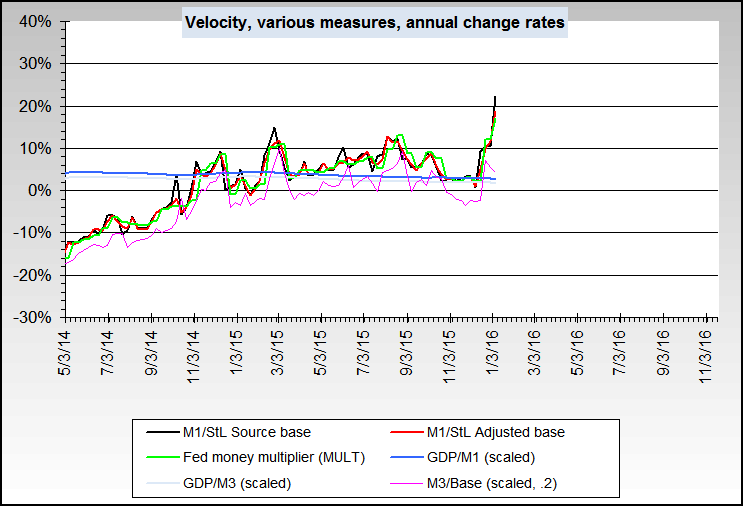Re: M1 Money Multiplier tanking
Poom or no poom ahead, I don't think banksters are going to do much risk-taking to-day at current interest rates. Again, this gets back to the way the idiots in the central banks are trying to manage the world economy.
I thought about this question of banksters placing money with the Fed, and I thought of my own I-bond deposit with the Fed. And why do I have I-bonds at the Fed? Answer: There is no place to invest money into bank CDs under the current interest rate regime.
But don't ask the man on the street for the obvious answers to why the world is the way it is, because the putz from Princeton knows all the answers.
So, the man on the street and the banksters in the banks invest with the Fed or invest in gold. Or, we have oil and gas trusts, and we are just waiting for the energy market to turn--- and the energy market will turn because the world needs energy.
At home in East Sooke, B.C, I am building a garage outside of my house with some idle money. After all, I do need a garage, so why put off the addition any longer? After the garage is built, a new roof may be the next home improvement because the old roof is nearing the end of its life. Why put that off any longer?
The ghost of Keynes is making me spend money, but I am spending money now which means that I will not be spending money in future. That is all that Keynesian economics can force me to do: spend a bit sooner than planned.
Poom or no poom ahead, I don't think banksters are going to do much risk-taking to-day at current interest rates. Again, this gets back to the way the idiots in the central banks are trying to manage the world economy.
I thought about this question of banksters placing money with the Fed, and I thought of my own I-bond deposit with the Fed. And why do I have I-bonds at the Fed? Answer: There is no place to invest money into bank CDs under the current interest rate regime.
But don't ask the man on the street for the obvious answers to why the world is the way it is, because the putz from Princeton knows all the answers.
So, the man on the street and the banksters in the banks invest with the Fed or invest in gold. Or, we have oil and gas trusts, and we are just waiting for the energy market to turn--- and the energy market will turn because the world needs energy.
At home in East Sooke, B.C, I am building a garage outside of my house with some idle money. After all, I do need a garage, so why put off the addition any longer? After the garage is built, a new roof may be the next home improvement because the old roof is nearing the end of its life. Why put that off any longer?
The ghost of Keynes is making me spend money, but I am spending money now which means that I will not be spending money in future. That is all that Keynesian economics can force me to do: spend a bit sooner than planned.



 )
)
Comment